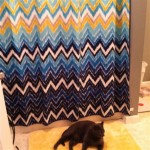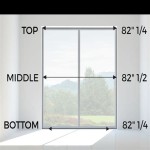Memory Training for Curtains: A Comprehensive Guide
Curtains, a fundamental element in interior design, play a crucial role in shaping the aesthetic appeal and functionality of a space. From enhancing privacy to filtering sunlight, curtains offer numerous benefits. However, choosing the right curtains can be a daunting task, with countless options available in terms of fabric, colour, style, and size. To simplify this process, memory training techniques can be employed to enhance the recall of key features and attributes, ensuring informed decisions and a successful selection process.
Visualizing Desired Outcomes
Memory training for curtains starts with a clear understanding of desired outcomes. This involves visualizing the overall aesthetic, functionality, and practical considerations. For instance, envision the desired level of light filtering, privacy, and noise reduction. Consider the intended mood and ambiance of the room, whether it should be a calming sanctuary or a vibrant and energetic space. By visualizing these outcomes, a mental framework is established, allowing for a focused approach towards identifying curtains that align with the specified criteria.
Prioritizing Key Features
After establishing desired outcomes, prioritize key features that are non-negotiable. These could include fabric type (e.g., blackout for light control, sheer for airy ambience), colour palette (e.g., neutral tones for versatility, bold hues for statement pieces), style (e.g., modern, traditional, minimalist), and length (e.g., floor-length, window-length). Prioritizing these features guides the selection process, eliminating options that do not meet the core requirements, thus streamlining the decision-making process.
Utilizing Mnemonic Devices
Mnemonic devices, techniques that enhance memory retention through association and visualization, can prove invaluable in curtain selection. For instance, create a mental image associating fabric types with their characteristics. Imagine a thick, dark fabric blocking out sunlight, representing a blackout lining. Similarly, associate sheer fabrics with delicate and airy textures to aid in recalling their light diffusion properties. Use visual cues, such as colour swatches, fabric samples, or even sketching, to solidify these associations.
Employing Visual Memory Recall
Visual memory, the ability to recall images, plays a crucial role in curtain selection. When browsing through options, actively engage in visualization, imagining each curtain in the intended space. Consider how it interacts with the existing furniture, colours, and lighting. Mentally adjust the curtain length, fabric texture, and colour to assess the overall impact. Employing visual recall helps create a vivid mental picture, enabling informed decisions based on visual preferences.
Creating a Memory Journal
Documenting preferences and experiences using a memory journal facilitates effective recall. Note down fabric names, specific colours, and style preferences. Sketch or include photographs of curtains that resonate well. This journal serves as a repository of ideas, allowing for easy reference during the selection process. Additionally, it helps track down specific options previously encountered, eliminating the need for repetitive searches.
Utilizing Mental Chunking
Mental chunking, a cognitive strategy involving grouping related items, enhances memory retention. Chunk curtain features into smaller, manageable units. For instance, group fabric textures (velvet, linen, silk), colours (warm tones, cool tones, neutrals), and styles (classic, contemporary, bohemian) into distinct categories. This allows for a more structured approach, fostering a more organized and efficient recall of desired attributes.
Employing Spaced Repetition
Spaced repetition, a memory technique that involves reviewing material at increasing intervals, strengthens neural connections and improves recall. After initial exposure to curtain options, revisit them at intervals, focusing on key features. This repeated exposure reinforces learned information, allowing for more efficient retrieval of preferences and decision-making during the subsequent selection process.
Leveraging Practical Applications
Memory training for curtains extends beyond the initial selection. Apply these techniques to recall curtain care instructions, cleaning techniques, and installation processes. Associate specific curtains with appropriate care procedures, ensuring their longevity and maintaining their aesthetic appeal. Memorizing installation steps helps streamline the hanging process, minimizing potential complications.
Exploring Memory Enhancement Tools
Various memory enhancement tools can complement training efforts. These include flashcard applications, mind mapping software, and mnemonic devices. Flashcard applications provide interactive recall of key features, while mind mapping tools facilitate the organization and visualization of information. Mnemonic devices like acronyms or rhymes can aid in remembering specific details, such as curtain care instructions or installation steps.

Memory Training Curtains Technology Twopages

Memory Training Curtains Technology Twopages

Memory Training Homerilla

Memory Training Curtains Technology Twopages

Memory Training Curtains Custom Pinch Pleat Drapes Dolcewe Page 2

Memory Training Curtains Technology Twopages

Memory Training Curtains Technology Twopages

Train Your Drapery

Train Your Drapery

How To Memory Train Your Curtains Howto Hometips Homedecor Beautifulhomes Luxurytips Youtube








